Having taken the last two weeks off, Sunday Chess Problem now makes a triumphant return! This week I have chosen a wonderful direct mate problem by Valentin Rudenko, composed in 1983. It deservedly won First Prize in its tourney. White is to play and mate in four:
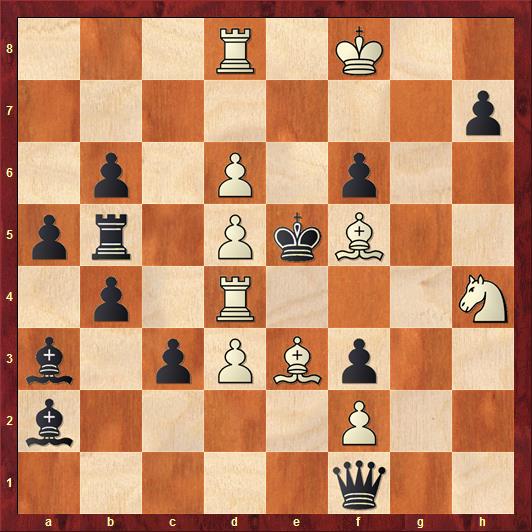
This problem showcases a maneuver I have not previously featured in Sunday Chess Problem: the switchback. This refers to a situation in which, in the course of a problem, a piece leaves a square and then later returns to it by retracing the same route. (When the piece returns to its original square by a different route it is called a rundlauf, but that's a different post.) There is an element of paradox here. Why would the piece return to a square it just vacated? Well, let's find out.
The key to the problem is 1. Rd7:

This guards the c7 square. Consequently, white is now threatening 2. Re7+ Kxd6 3. Rd7+ Ke5 4. Re4 mate:
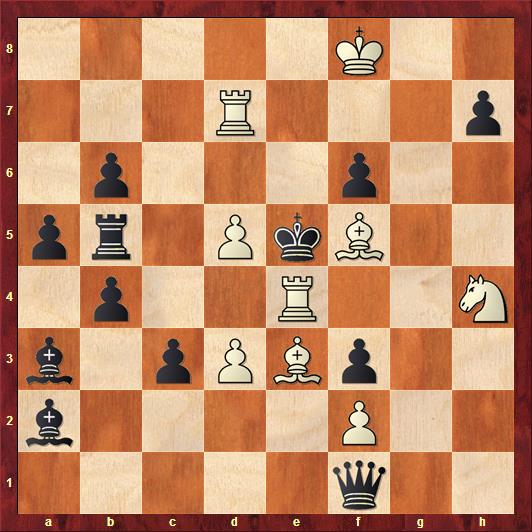
The switchback by the white rook, which moved to e7 and then back to d7, forced the black king to take a pawn that was actually in white's way. Thus, when the white rook returned to d7 it was covering d5. This freed the d4 rook to give mate. (Note that if black had played 3. ... Kc5, then white would have discovered checkmate by moving the rook away from d4.)
We shall see this pattern three more times.
Black can defend the threat by playing 1. ... b3:

This opens a line for the black bishop on a3. If white now tries to go through with his threat, he will find his own king in check after black moves his king from d6 back to e5. (Note the placement of the white king on f8, on the same diagonal as the bishop on a3). But in freeing one bishop, black has closed a line for his other bishop. This allows white to continue with 2. Re4+ Kxd5 3. Rd4+ Ke5 4. Re7 mate:
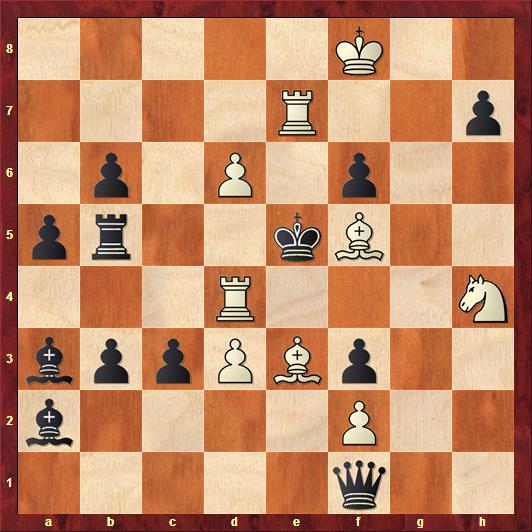
This time the switchback forced black to remove the d5 pawn. Thus, when the rook played its switchback from e4 back to d4, it was now covering the square d6. This freed the other rook to give mate. Of course, this line would not have worked previously since the black bishop on a2 would simply have interposed at e6.
What if black defends with the brutal 1. ... Bxd5?

This time the trouble is that black's bishop now self-blocks his own king. Since white no longer needs to cover the d5 square, he takes care of business with 2. Bf4+ Kxd4 3. Be3+ Ke5 4. d4 mate:
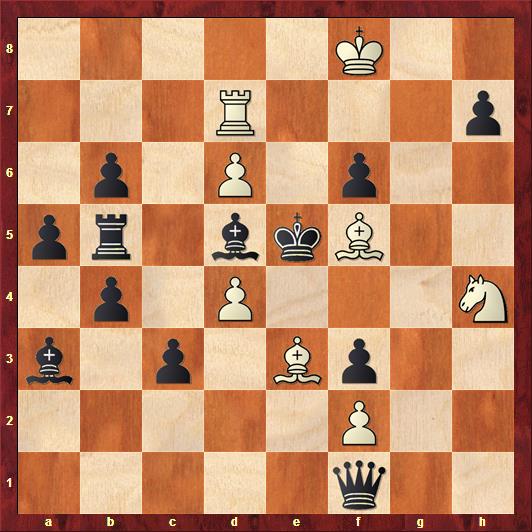
White forced black to remove the rook on d4, which freed up a square for the white pawn.
The final defense is 1. ... Qxd3:
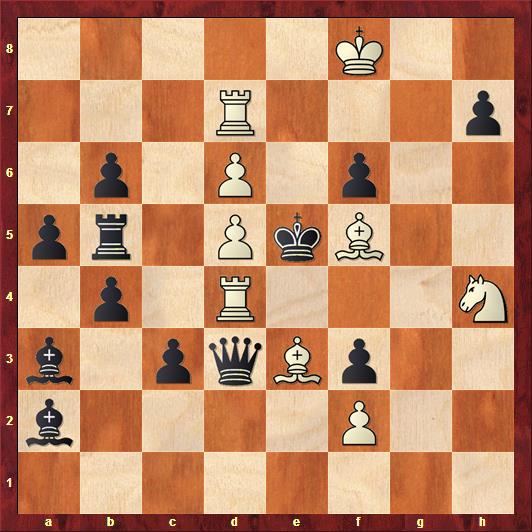
Would you believe that the problem with this defense is that the black queen is no longer covering f4? White mates with: 2. Nxf3+ Kxf5 3. Nh4+ Ke5 4. f4 mate:

There is a small break in the thematic unity with this last line, since the capture of the white bishop on f5 was only incidental. The point of the switchback was simply that white had opened a line for his f2 pawn. But in a problem as beautiful and as brilliantly conceived as this it seems churlish to point this out.
Great stuff! See you next week!
- Log in to post comments

Wasn't immediately taken with this one, but the more I look the more impressed I am. The final defense is awesome, as your statement concerning the f4 coverage makes clear. Quite humorous.
Hmm.... I idly wonder -- what's the purpose of the pawn on a5?